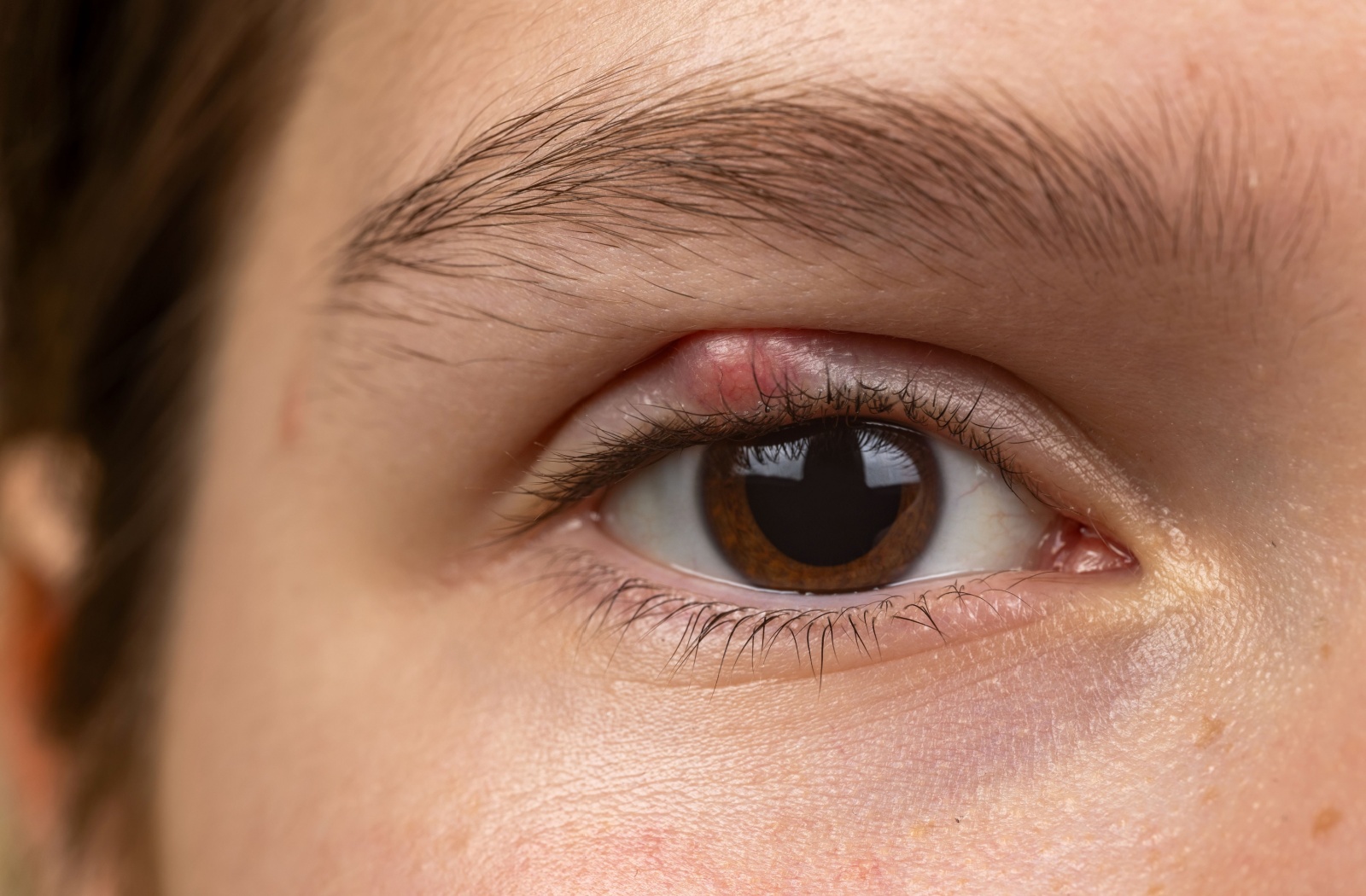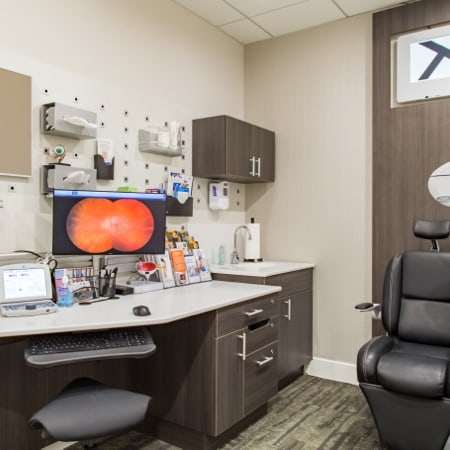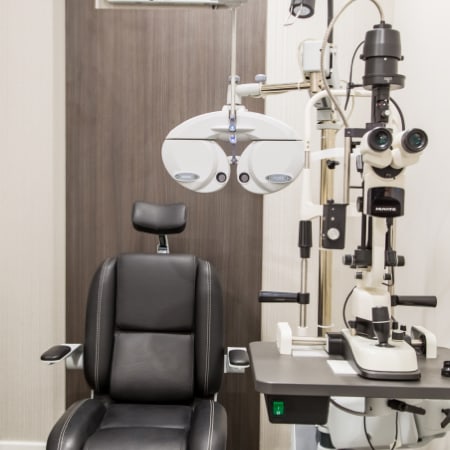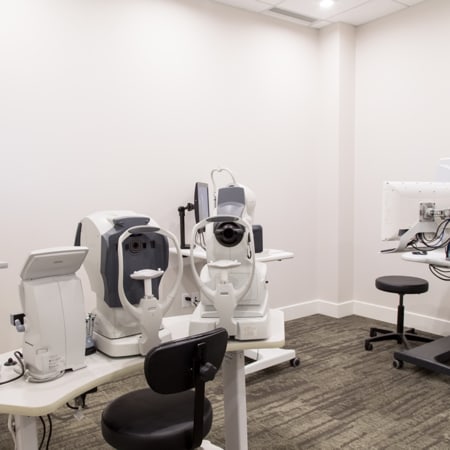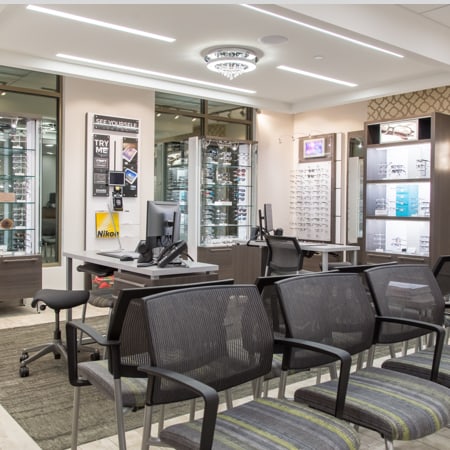Red, irritated eyelids can be frustrating enough without worrying about whether you might pass the condition to someone else. Many people dealing with blepharitis wonder whether it’s something they can catch or spread.
Blepharitis itself is not contagious, but certain causes like bacteria or mites may be shared through close contact or shared personal items.
What is Blepharitis?
Blepharitis is an inflammation of the eyelids, typically around the base of the eyelashes. While it’s not a serious condition, it can cause ongoing discomfort if not properly managed. People with blepharitis often experience symptoms including:
- Red, swollen, or irritated eyelids
- Itchiness or a burning sensation around the eyes
- Flaking skin near the base of the eyelashes (similar to dandruff)
- Crusting along the eyelid margin
- Watery or overly sensitive eyes
- Blurred vision that fluctuates throughout the day
- A sensation of something being in the eye
Blepharitis often affects both eyes and can recur, which is why consistent eyelid hygiene plays a role in managing its symptoms.
Types of Blepharitis
There are two main types of blepharitis, and many people experience a combination of both:
Anterior Blepharitis
This affects the outer edge of the eyelid, where your eyelashes meet your skin.
Posterior Blepharitis
This occurs along the inner edge of the eyelid, where meibomian glands produce the oils that are important for healthy tears. This variety is often tied to conditions like meibomian gland dysfunction or skin conditions such as rosacea and eczema.
Both types of blepharitis may also involve bacterial buildup, Demodex mites, or skin-related issues.
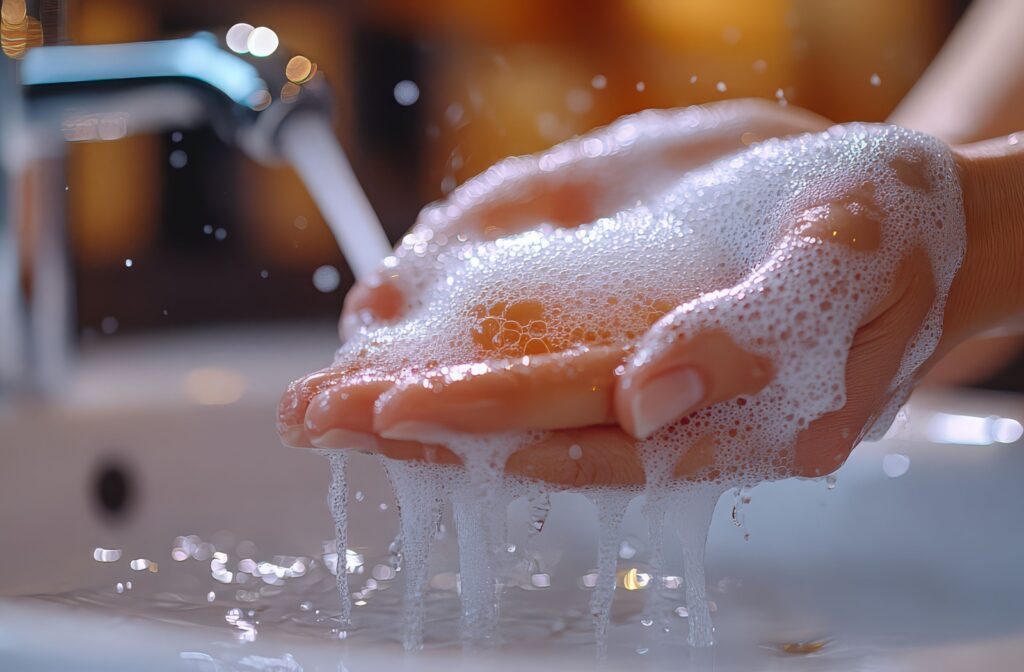
Can You Catch Blepharitis?
Blepharitis itself is not contagious, which means you won’t get the condition simply by coming into contact with someone who has it. However, certain underlying causes associated with blepharitis, like bacterial infections or Demodex mites, can spread in close-contact situations.
For instance, sharing makeup brushes or eye care products with someone who has mites or certain bacteria on their eyelids could increase your chances of developing similar issues. Practicing good hygiene is key to minimizing this risk.
What Causes Blepharitis?
Several factors can contribute to the development of blepharitis:
- Bacterial infections: Staphylococcus bacteria often collects near the lash line, leading to irritation and inflammation.
- Clogged oil glands: Blocked meibomian glands in the eyelids may disrupt tear film balance and irritate the skin.
- Skin conditions: Issues like rosacea, eczema, or seborrheic dermatitis can make some people more likely to develop blepharitis.
- Allergic reactions: Ingredients in eye makeup, skincare products, or environmental allergens may irritate the delicate eye area.
- Demodex mites: These tiny mites naturally live on your skin but can cause problems when they overpopulate near the eyelids.
Understanding the root cause of blepharitis is an important step to finding the right treatment plan.
Is Blepharitis Linked to Other Eye Issues?
While blepharitis itself isn’t an infection, it does increase the likelihood of developing certain eye-related problems, such as:
- Styes: These uncomfortable lumps occur when oil glands near the eyelid margin become blocked.
- Chalazia: These are cysts that form when a gland remains blocked over time.
- Conjunctivitis (Pink Eye): Severe cases of blepharitis may lead to this condition, which involves inflammation of the conjunctiva (the transparent layer covering the white part of the eye).
To lower your chances of developing secondary conditions, regular eyelid care is recommended.
Steps for Preventing Eye Issues
Good hygiene habits may not cure blepharitis, but they can prevent related issues and protect your overall eye health:
- Avoid sharing makeup, towels, or personal care items.
- Wash your hands often, especially before touching your eyes.
- Replace mascara and eyeliner every three to four months to prevent bacterial growth.
- Use clean makeup brushes, and avoid applying eye products too close to the lash line.
Improving Eyelid Hygiene
Consistent eyelid hygiene is the foundation of effective blepharitis management. Here’s how to care for your eyelids:
- Heat mask: A warm compress helps loosen any blockages in your oil glands. Use it for about 10 minutes daily to prepare your eyelids for cleaning.
- Eyelid cleaning: Use a specially formulated eyelid cleanser with a soft brush or pad. Gently scrub the base of your lashes to remove debris and bacteria. Avoid using regular soaps or baby shampoo, as these may irritate your eyes.
- Exfoliation: For more stubborn cases of blepharitis, professional exfoliation treatments may be necessary.
Blepharitis Treatment
While there’s no permanent cure for blepharitis, the right treatment plan can help you manage it effectively:
- Blepharoexfoliation: Professional in-office treatments target buildup and bacterial growth.
- Antimicrobial sprays: These reduce bacteria at the eyelid margin.
- Medications: We may prescribe medicated eye drops to reduce inflammation or address specific underlying issues, such as Demodex mites.
Collaborating with a dry eye specialist is the best way to get a treatment plan tailored to your specific needs.
Take Control of Your Eye Health
Blepharitis can be a long-term issue, but it doesn’t have to impact your quality of life. Careful hygiene, regular check-ups, and professional treatments can make a big difference. If you’re dealing with blepharitis or have concerns about your eye health, our team at Bluewater Optometry is here to help.
Book your appointment today and take the first step towards clearer, more comfortable vision.

